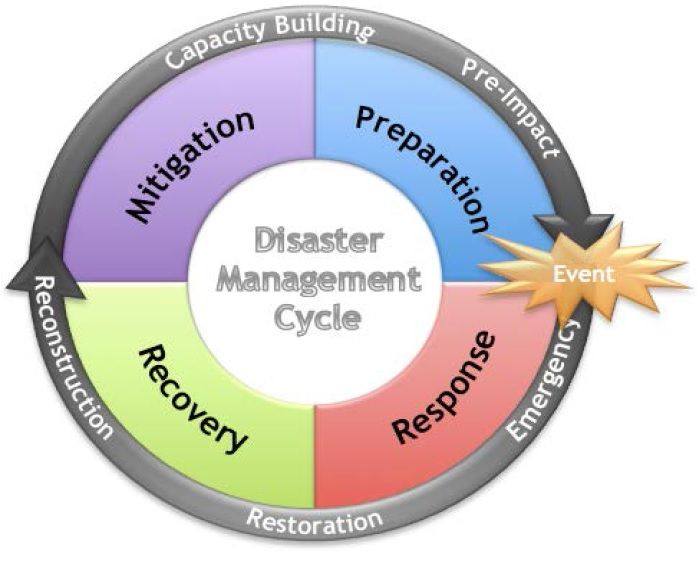Thomas Wieczorek, director of the Center for Public Safety Management, LLC and retired city manager of Ionia, Michigan, joined the International City/County Management Association (ICMA) 2018 annual conference in Baltimore to get attendees ready to tackle emergency management in a “What do you do if"-style presentation. Disaster management is a continuous cycle -- the process should begin long before an incident.
One question local government leaders will ask after a disaster is “How can we prevent this from happening again?” It can sometimes to take your entire career to address mitigation issues, he said. For those cities that haven’t done any planning since 9/11, it’s time to revisit, Wieczorek stressed.
The Emergency Management Process Never Ends
“All disasters start and end at the local level,” said Wieczorek. He advised attendees to call state, regional and federal officials and counterparts and meet them because they are eager to work with local officials.
If you fail to plan, you are planning to fail,” he said.
The basic emergency management process is five steps:
- Look at emergency plans on a regular basis
- Conduct all hazard risk assessment
- Exercise plans
- Ask what can you do to get ready?
- Sirens
- Early alerting
- Reverse 9-1-1
- Know your team
Questions to Ask When Planning Disaster Management

“How often do certain things happen in your community?” Institutional knowledge is a good place to start, Wieczorek said. Then, consider who lives in your community, think about what certain populations need in certain disaster situations.
“The more data you have the better your result,” he said.
Some emergency preparedness questions local governments should consider are:
- Do you want statements coordinated through a public information officer, or do you train elected officials to be PIOs? Make sure PIOs don’t get sucked into questions they don’t want to answer. “They are going to be peppered with questions,” he said.
- Do you give them education and training?
- Are you prepared to react to messages on social media?
- Do you have a contract with a company to supply fuel to generators?
- Do you have a place identified where you can put debris? It could be there for years or decades.
- Do you have temporary or permanent housing for victims and evacuees? When housing funds run out, where are those people going to go?
- Do you have a system to run background checks as folks arrive at shelters?
- Are there processes set up to address health and social services needs?
- Where are you going to organize all the donations that come in?
- Do you have food and water coming into the emergency operations center (EOC)?
- Do you have counselors for first responders and others managing or experiencing traumatic events?
- Do you have Continuity of Operations (COOP)? Have you been planned beyond one level -- what if mayors and city managers are out of town and can’t get approval for purchase of water or issue paychecks to employees?
- Do you have a place to house employees children, wives and spouses that are responding to the emergency?
Above All -- Know Your Team
While the the success of an emergency operation often depends on how local officials work with emergency officials when disasters happen, interaction with the state and federal government also helps also with disaster funding, according to Wieczorek.
When that disaster is declared, it’s kind of like Christmas,” he said.
Note that if the state doesn’t have resources for a local request, it will go to the federal level. But the federal government does not take over disaster response -- they support local governments with resources, under The Stafford Act, he said.
Maintain and Use Interlocal Agreements & EMAC
Wieczorek said local governments should rely on the Emergency Management Assistance Compact (EMAC) -- a mutual aid agreement among states and territories of the United States. EMAC has mission-ready packages for floods, hurricanes, wildfires, ice storms and more. Liability issues are covered with requests.
Note that EMAC is missing top level and certain administrative support. For example, additional city managers are not part of the package.
Review and download Wieczorek’s presentation:
Local Government 101 Emergency Management-2018 Conference Handout_0 by Ed Praetorian on Scribd













